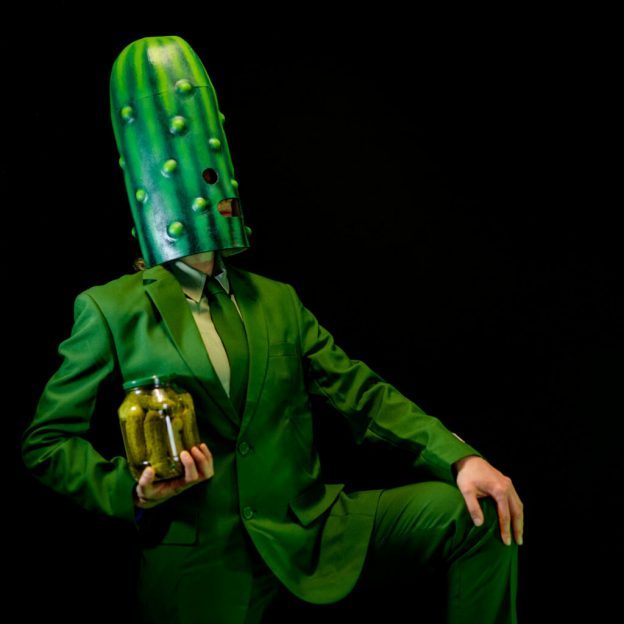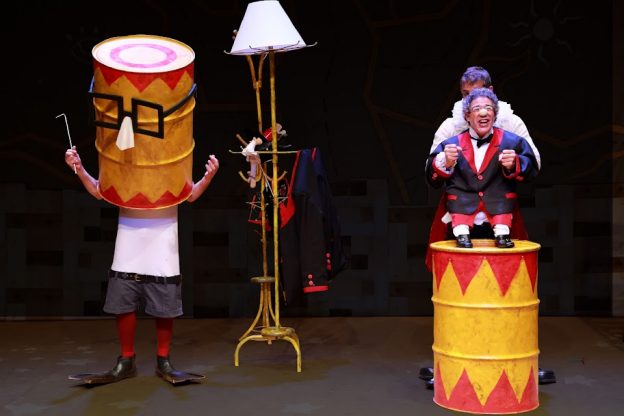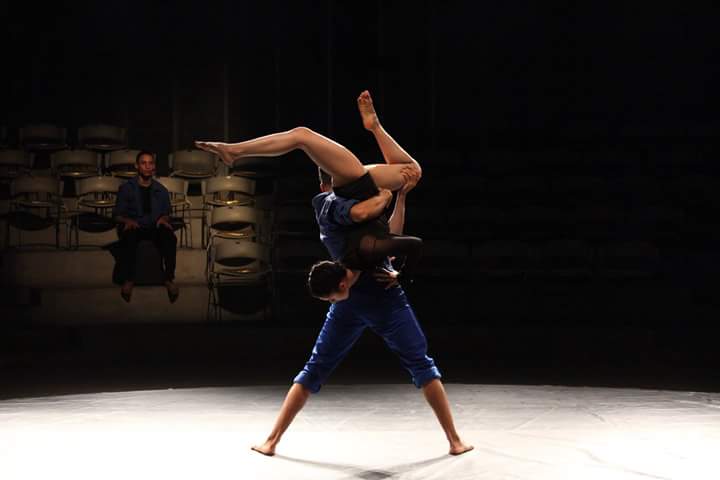A tale of love and luck told with dolls and toy vehicles, Ulysses for children featuring pop-up books and paper cuts, and a deconstructed King Lear replete with puppets and projections. Then, there’s a beatnik poet pickled onion, a story featuring animated lesbian vampire bunnies, and a crisp-stealing flock of birds. Some of the visual theatre treats seen by Dorothy Max Prior at the Edinburgh Festival Fringe 2025
Visible Fictions’ show Up – presented at Gilded Balloon, and aimed at a teen and young adult audience – is a breathless two-hander exploring luck and love, the odds of surviving a plane crash, and Heraclitus’ Union of Opposites. As the piece starts, we encounter two people who find themselves sitting next to each other on a long-haul flight. One, Jay, is the luckiest man in the world – as a baby, he was the only survivor of a plane crash that killed his parents, subsequently got supported by an anonymous benefactor, became a trader who made a million, and has now quit to tour the world. Jayme, on the other hand, is also an orphan, raised by her granny – but has encountered bad luck at every step of the way, her mournful history of trips and falls, bangs and crashes, and tragical lost loves relayed with sharp humour.
Blending new writing, physical theatre, and object manipulation, the piece is skillfully directed by Duggie Irvine, and performed with enormous precision and feeling by the two actors, Zoe Hunter and Michael Dylan, who have a fabulous on-stage complicity, fielding a dizzyingly complex choreography of tiny figures and vehicles, toy animals, dolls, suitcases, umbrellas, balloons, cakes, wine glasses, playing cards, and photographs. Phew, it is exhausting just watching them!
Some of those suitcases turn out to have tiny worlds inside – from Hawaiian volcanoes to the elusive Loch Ness Monster. Unlucky Jayme and Lucky Jay’s life stories unfold in between scenes of plane turbulence (and worse), performed with excellent physical theatre timing and panache; and tongue-in-cheek whiteboard lectures on airplane safety statistics, speculation on what is actually meant by ‘good’ and ‘bad luck, and that crucial theory of the Union of Opposites. What goes up, must come down. But what comes down must also go up…
A refreshingly ambiguous story that gives no trite answers to conundrums posed, and offers us numerous possible endings to the tale – but it is clear that whatever the outcome for our two protagonists, love trumps death.
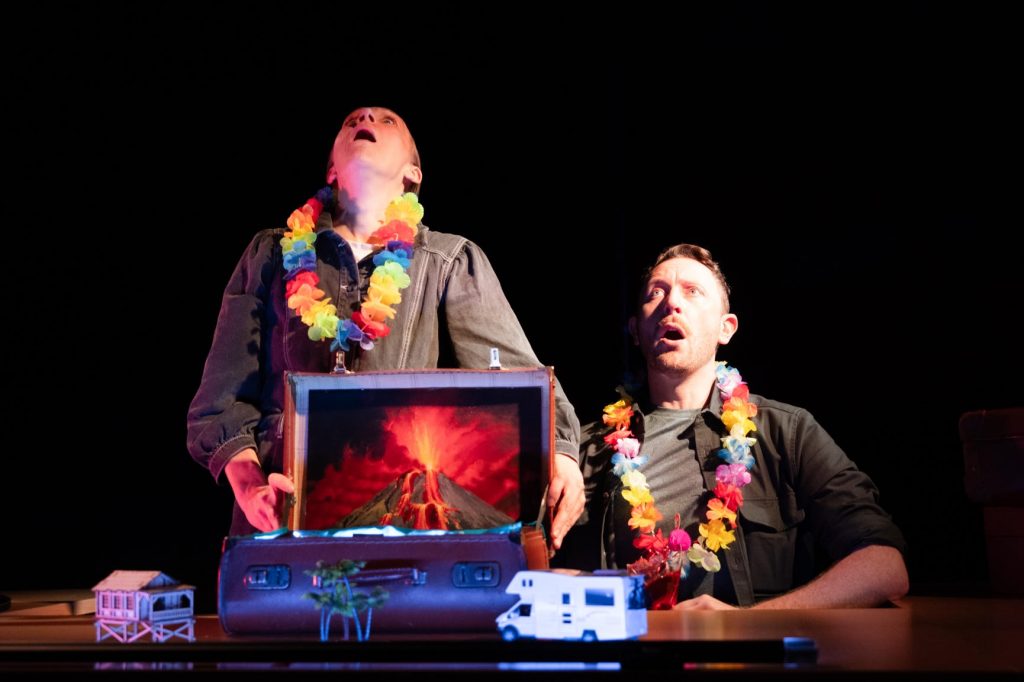
Meanwhile, over at Pleasance Courtyard, Branar’s You’ll See offers us James Joyce’s Ulysses for children. Really? In under an hour? Yes, really! Solo performer Helen Gregg pulls it off with the help of three beautifully designed pop-up books (the story’s told in three parts, naturally) and a whole ensemble of paper-cut people, plus a lovely little mechanical diorama, which gives us the passing streets of the city as Paddy Digram’s funeral carriage passes slowly by. There’s a great soundtrack of waltzes and found-sounds of Dublin streets, bars and sea shores; and Helen Gregg delivers it all in a very deft and welcoming storytelling mode that manages to convey the essence of Leopold Bloom, Stephen Dedalus and Molly Bloom’s 24-hour odyssey without ever talking down to the young ’uns.
As the piece proceeds, we learn that ’‘Every life is in many days, day after day. We walk through ourselves, meeting robbers, ghosts, giants, old men, young men, wives, widows, brothers-in-love, but always meeting ourselves’.
The pop-up books are truly a thing of beauty, giving us gorgeous representations of key sites in the book. Thus, we encounter the start of the story, the dawn of 16 June 1904, with Stephen Dedalus on Sandycove Strand, musing on the ‘snot green sea’ – one of many inclusions of tiny snippets of Joyce’s text into the piece. The children in the audience enjoy Stephen taking a wee, then picking his nose and depositing a bogy on the rocks. We move into town, passing through the National Library, the Freeman’s Journal offices and printing press, and Davy Byrne’s pub. Switching to Leopold and Molly Bloom’s stories, we enter their house on Eccles Street; the butcher’s shop where ‘Mr Leopold Bloom [who] ate with relish the inner organs of beasts and fowls buys his breakfast pork kidney’; Sweeny’s Pharmacy, where Bloom purchases lemon soap for Molly; and the Post Office, where the content of the letters Leopold has been exchanging with a lady friend are brushed over nicely by our storyteller, who tells us that ‘we’ll have to miss some things out of the story as we haven’t time, and this is one of them’ – with an ironic nod to the adults in the audience.
Of course, this is just a taster of Joyce’s Ulysses – but is it an enjoyable one, and does it make us want to read (or re-read) the book? Yes, yes, and yes!
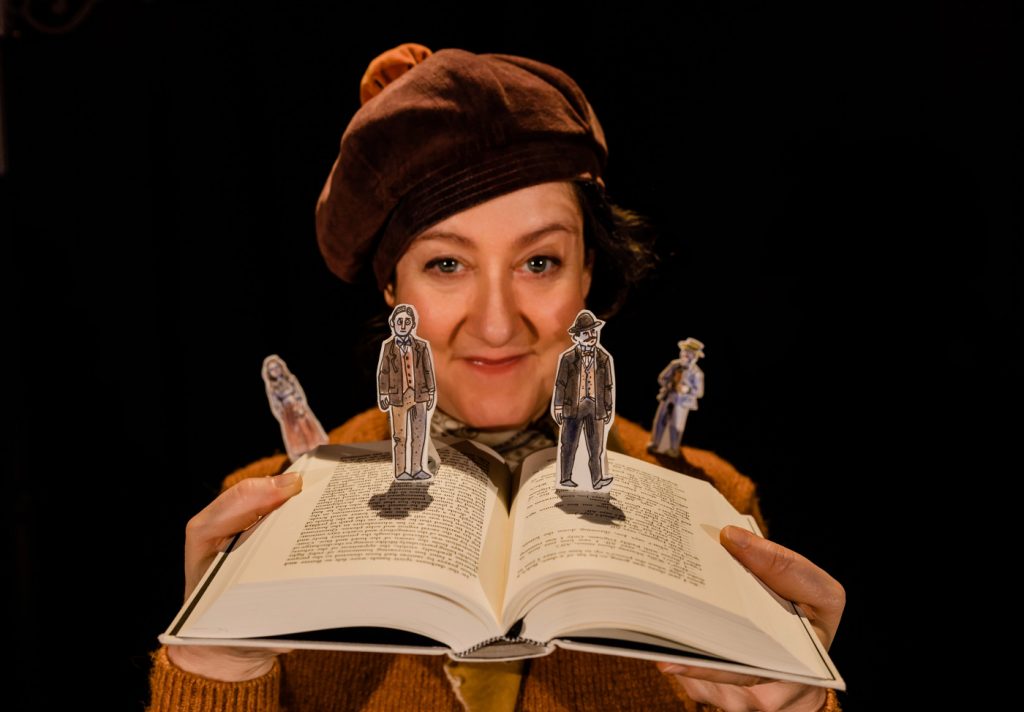
Another Irish company – this time an ensemble – and a retelling of a very different sort can be found at The Traverse, where Irish playwright and filmmaker Dan Colley’s Lost Lear plays out as a deconstructed, reimagined version of Shakespeare’s King Lear – or perhaps, more precisely, the production uses Lear as a springboard for a meta-theatrical exploration of a whole host of ‘difficult subjects’ including dementia, absent parent-neglected child dynamics, honouring the needs of ‘the child within’, setting relationship boundaries…
‘Who is it that can tell me who I am?’ We start in a rehearsal studio, where a young actress (played by Venetia Bowe) is working through her preparations for her exciting new role – she’s to play King Lear. The first big twist of the story comes early (so I feel OK about this revelation), as we discover that in fact we are inside a nursing home, and what we are witnessing is an elderly dementia patient, Joy, engaged in a Groundhog-day series of rehearsals for a production of King Lear that will never happen. Her director and co-actor Liam – who is in fact her therapist (played by Manus Halligan) – explains to Conor, her estranged son come to visit (played by Peter Daly), that this charade is vital to preserve her sense of self-worth. Imagined as a foil to the female Lear, the son has been cast as Lear’s youngest daughter Cordelia in the latest ‘rehearsal’. Conor is not convinced. As the play progresses, the difficult history of Joy and Conor’s relationship is unearthed.
The cast are all great. I especially like Peter Daly as Conor – played with fantastic subtlety, a powerhouse of shifting emotions. That Joy is played by a young woman – and her rather over-the-top stage presence – seems odd at first, but all makes complete sense as the story unfolds. It is a visually rich show, with puppetry, projections and live-feed video playing a vital part in the piece. The two puppeteers, Em Ormonde and Clodagh O’Farrell, do a sterling job, not just with the large-scale puppet when it eventually appears, but in ‘puppeteering’ Venetia-as-Joy, and the space itself with (for example) hand-held fans creating the ‘winds that blow’.
A thought-provoking show broaching difficult subjects – and a clever dramaturgy, with the reveals coming slowly but surely as the piece progresses, until eventually the jigsaw puzzle is completed. And what a joy to see a big, bold stage design (courtesy of Andrew Clancy and the rest of the design, film, costume, AV, sound and lighting team) and a five-strong ensemble onstage. So many of this year’s Fringe shows, even at the Traverse, seem to be one-person shows.
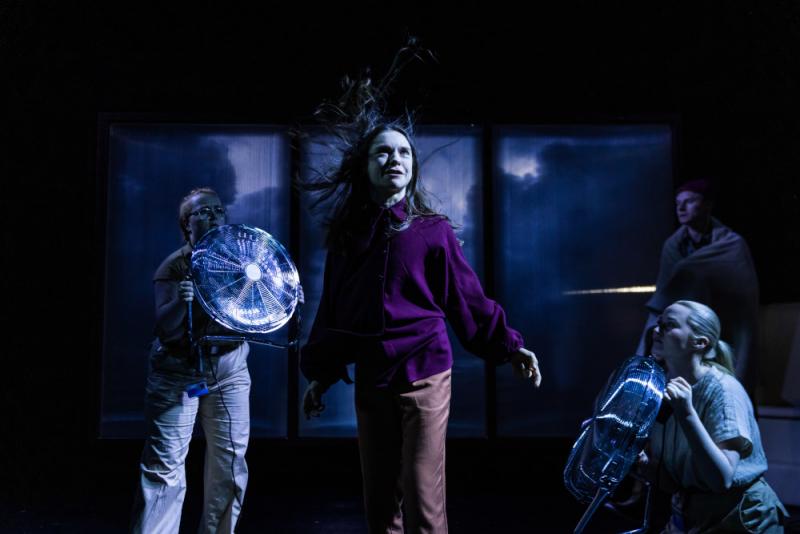
But one person can populate the stage with a whole array of wonderful characters, for sure. Take Ruxy Cantir’s Pickled Republic, for example – a fabulously absurdist piece, in which we are invited into a world of vegetables sat inside a pickle jar.
We meet a melodramatic tomato (‘Eat me! Eat me!’), a crooning potato-head burlesque queen, a Beatnik poet silverskin onion who delivers killer one-liners like ‘I have layers’ and ‘I’ll make you cry’; and a breastfed baby carrot with a melancholic penchant for sludge. Plus, best of all, a trance-dancing, strip-teasing pickled cucumber mime artist trying to get out of aforementioned glass jar.
If I have a quibble, it’s perhaps to wonder if potatoes and tomatoes do get pickled. Perhaps they do! But never mind – this is a great show. Surreal clowning, puppetry and mask – performed with panache by Ruxi Cantir; directed by Total Theatre Award winning puppeteer Shona Reppe. Totally batty, totally fabulous physical comedy. My kind of funny, for sure…
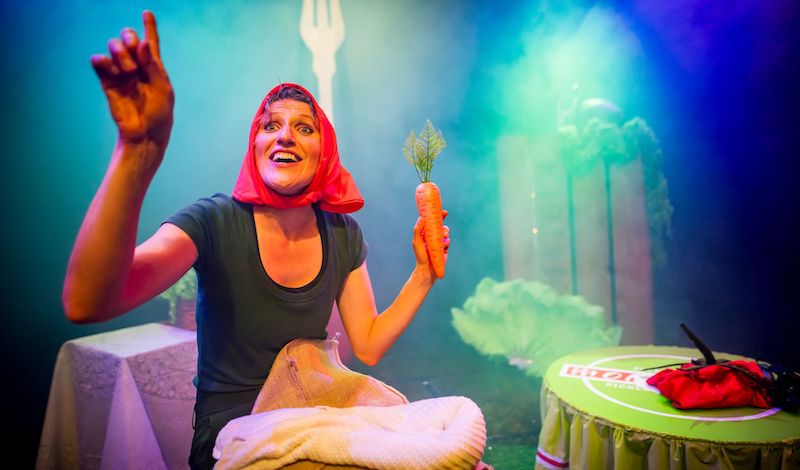
I had high hopes of Surreally Good by Scott Turnbull. We are promised ‘live lo-fi animations on an old overhead projector, catchy songs played badly on a miniature Casio Keyboard, and a series of unexpectedly tender moments’ and yes – all of this happens, but somehow the whole is less than the sum of its parts. On the ‘minus’ side, I find the framing device of an ‘edu-tainment’ lecture by the son of a famous projectionist wears thin after a while, and whilst the arts funding bodies’ obsession with ‘youth engagement’ and ‘the environment’ does deserve to be mocked, the send-ups here don’t quite hit the mark. The songs are awful – not funny awful, just plain awful. He says ‘fuck’ a lot, as if it were something naughty and alternative, rather than the bog-standard go-to of every emerging Fringe comedian – which gets tiresome. But comedy is a funny thing – one man’s meat is another woman’s poison, and I just didn’t find the show funny a lot of the time.
But now for the plusses. I like a lot of the visual art/theatre work. I enjoy the Tony Hart-Vision On audience portrait drawing scene. The use of the OHP is great – in-character one-man-band fumbling and all. The little stories within the story, featuring some very lovely hand-drawn and live-animated illustrations, colour acetates, and shadow-puppetry silhouettes are great. I especially like the lesbian vampire bunnies story; and the drowned dog wearing glasses is great. When the ‘how my dad met my mum’ story – threatening to be told at various points in the show – finally comes, via the OHP, it is worth the wait, a wonderfully tall tale of life at sea.
So, some very lovely things in here, but it feels as though the artist/performer has thrown all his eggs into one basket to make this show, and it is not quite working for me, although the Summerhall audience were laughing merrily. And we were given badges, always welcome – even if it’s not a Blue Peter badge (one of very many BBC TV and radio show references in the show!). For me, the visual theatre and animation aspects of the piece were the most interesting element. I’d happily see those lovely little illustrated stories framed in a simpler way… there’s a great show in here trying to find its way out.
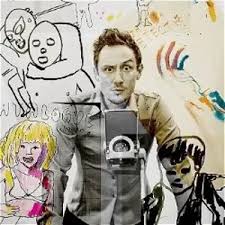
Finally, renowned Scottish family theatre company Red Bridge Arts celebrated its 10th anniversary with the UK and European premiere of Pekku at Zoo Southside, as part of the Made in Scotland Showcase. Created as a co-production with Japan’s ROHM Theatre in Kyoto and Ricca Ricca Festival, Pekku has already delighted audiences throughout Japan – the show is word-free, and a physical and visual delight, so crosses boundaries with ease. It’s devised by award-winning children’s theatre artists Andy Manley, Ian Cameron, and Shona Reppe – the award-winning team behind the Total Theatre Award winning show White.
Pekku ‘takes a playful look at what happens when you just want to be left alone and others have a very different idea’. It is aimed at 3 to 6-year-olds, so I brought 4-year-old Juno and 6-year-old Saorsa with me…
The solo performer is the highly talented Andy Manley – such a lovely, gentle clown presence, who the children warmed to immediately. From the start, we know we are in a safe pair of hands. The stage is set with just two ‘washing lines’ stretched across the performance space. Andy appears flapping like a giant bird in a big yellow-green garment that turns out – once he has disentangled himself from it – to be a tent. Somehow, from within the tent, or inside a small brown suitcase he is holding, the following objects materialise: a small table, a chair, a toilet roll on a dispenser, a red flag, a bat (and imaginary ball!), and a packet of crisps. Meanwhile, on the washing line, we see a little yellow bird – a peg, but we immediately believe it is a bird when it starts to chirp. There then ensues an escalating battle between man and bird – or birds, as more and more arrive – over those tasty crisps. Crisps eaten, Andy calls Deliveroo and orders more… and more… and more…
It’s a totally delightful story, told through visual imagery, physical action, and a terrific soundtrack of cheeps, squealing tyres, delivery van honks, and the loud crunching of crisps. We all have our favourite moments, but agree that the birdie disco inside the tent is truly terrific. Oh, and I said it was word free but my young companions remind me that there is one word: “shoo!”. And the girls have a theory about the character Andy is playing: he’s not a man, but a big bird, called Pekku, who disguised himself as a man! And who knows, perhaps they are right.
Such a great show to see on my final day in Edinburgh for this year’s Fringe – ticks all the total theatre boxes brilliantly!
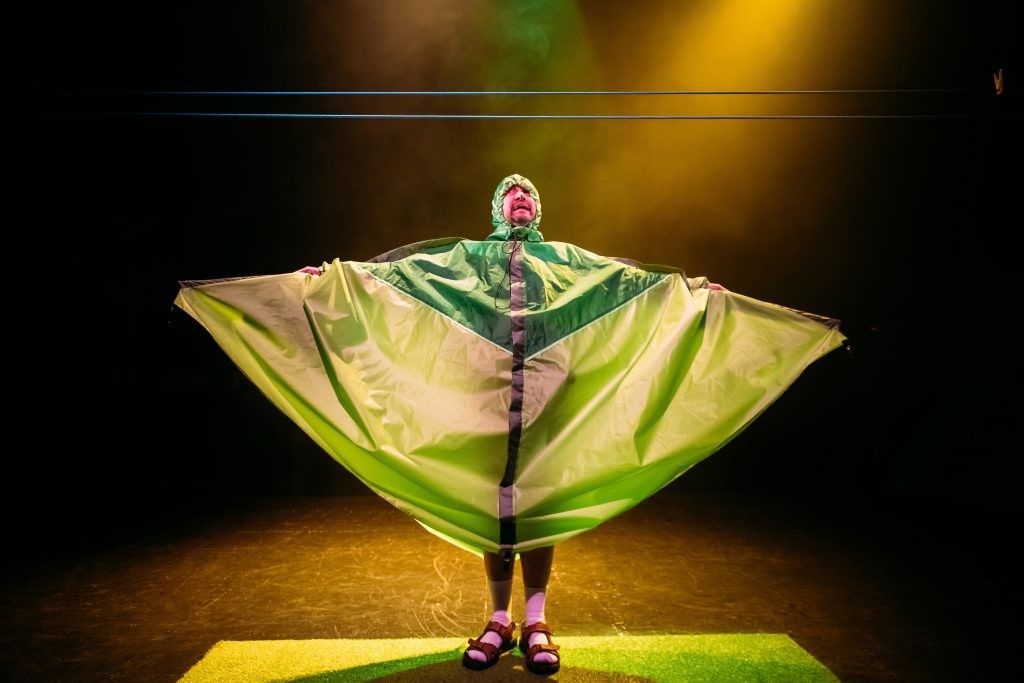
Featured image (top): Ruxandra Cantir: Pickled Republic
Visible Fictions: Up, Gilded Balloon at 5.40pm
Branar: You’ll See, Pleasance Courtyard at 12.00
Ruxandra Cantir: Pickled Republic, Summerhall at 1.15pm
Dan Colley: Lost Lear, Traverse, various times
Scott Turnbull: Surreally Good, Summerhall, 11.35
Red Bridge Arts: Pekku, Zoo Southside 1–9 August 2025
For more information or to book shows, see www.edfringe.com

